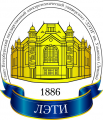You are here
20th FRUCT Conference: Demo section
![]()
![]()
![]()


The Demo section of the 20th FRUCT conference will be combined with the conference social event. The conference and seminar participants are warmly welcome to take part in the event.
Firstly, we ask all authors to send titles and 2-3 paragraph descriptions of your demo proposals to info<at>fruct.org by March 24, 2017. Please also make sure that the demo will be prepared in line with the below provided recommendations.
Introduction
The demo section at FRUCT conference will consist of two parts. The first part is the promotional section, which is used to present/introduce demo projects to the public. The main idea of this section is to make people aware of the main point of the demo and be interested enough to come to demonstration stands during the second part of the demo session.
The second part of demo session will be held in classical stand-based format, where the team will get a place to install the demo and place for a poster. If you have some special requirements please contact organizing committee by email info<at>fruct.org.
The demo section of FRUCT conference will be held in Pecha Kucha format of presentation. This page contains all required information about the Pecha Kucha format and requirements that have to meet.
Pecha Kucha Presentation Format
Pecha Kucha is a presentation technique where a speaker shows a definite number of slides, each for 20 seconds. The slides are changed automatically during the talk. The main intention for Pecha Kucha presentation style is to prevent participants from being too verbose and to make their talks more dynamic and impressive.
Pecha Kucha Night is an event where each speaker uses Pecha Kucha presentation, and speakers change each other in non-stop fashion. Initially invented by architects, this kind of event is often used to present creative projects or work; nowadays it is also used for R&D talks too. Pecha Kucha Night format allows all participants to make announcements about their demos in attractive and time-efficient way. That is why we have chosen this format for demo promotion section at FRUCT conference.
How to prepare Pecha Kucha presentation
Here is an instruction on how to prepare your Pecha Kucha style presentation for Demo promotion section. The essentials points of this instruction are also available in the form of check list below.
Your presentation must contain exactly 6 slides, and each of them will be displayed for 20 seconds. The slides will be changed automatically. So, the whole presentation will take exactly 2 minutes (it should be noted that usually Pecha Kucha presentation has 20 slides, but we have to reduce number of slides due to a large amount of submitted presentations).
Provide the information about yourself and your presentation on the first slide (name, institution, title of your presentation).
The main purpose of your talk would be to interest people, so your presentation should make absolutely clear the main ideas of your project and explain what you plan to show at the demo stand. Make your presentation fascinating to attract attendees and avoid technical details in your talk.
Reveal one main idea on each slide. Do not overload your slides with information. Remember, that each slide is displayed only for 20 seconds. Place no more than 2 lines of text per slide, or one big picture. Do not use slide titles.
Do not duplicate the same slides in your presentation — it is cheating! If you see that 20 seconds for a particular slide is not enough for you, try to decouple it into the two or more, or omit the details.
Do not place “Thank you” or “Q&A” slides in the presentation. Pecha Kucha session does not imply any questions from the auditory. All the questions will be asked afterwards in a poster room.
Prepare your speech thoroughly and beforehand. As you have only 20 seconds per slide, it is quite impossible to improvise during the talk.
Rehearse your speech several times to be sure in the absence of pauses when you wait for the slide change, or accelerations when you fails to follow your slides. Try to speak in the same pace during all the presentation. It definitely depends on your text, so try to prepare near the same amount of text in speech for each slide.
Check list
- Use exactly 6 slides.
- Place information about yourself and your presentation (name, institution) on the first slide.
- Reveal one main idea on each slide.
- Place no more than 2 lines of text or 1 large image per slide.
- Do not duplicate the same slides, do not place “Thank you” or “Q&A” slides in the presentation
- Do not use any slide change animation
- Prepare your speech thoroughly and do not forget to rehearse it
Useful links
- Pecha Kucha FAQ
- Collection of Pecha Kucha Night presentations
- Pecha Kucha Nights: Guide to Better Presentations Skills
LIST OF ACCEPTED DEMOs
- Voice Assistant for Sailfish OS, by Petr Vytovtov, Kalashnikov ISTU
- Smart-M3 CuteSIB Demo for a Wireless Router with OpenWrt-Based Firmware, by Sergey Marchenkov, Dmitry Baganov and Dmitry Korzun, Petrozavodsk State University
- “Drive Safely” – Driver Assistance Application for Android, by Igor Lashkov, ITMO University and Alexey Kashevnik, SPIIRAS
- Historical app for Mobile Devices, by Roman Mokretsov, Saint-Petersburg Electrotechnical University "LETI"
- The demo prototype of mobile treatment assistance system for hypertensive patients, by V. Fokin, K. Orlov, A. Platov, Kr. Shevtsova, Y. Zavyalova, Petrozavodsk State University
- Intelligent Control of Six-Wheeled Mobile Robot for Obstacle Overcoming, Mikhail Petrov, ITMO University, Alexey Kashevnik, SPIIRAS
- Smart Space Creation Based on Smart-M3 Platform and DD-WRT Mobile Device, Sergei Mikhailov, ITMO University, Alexey Kashevnik, SPIIRAS
- Uncomplicated and Affordable DIY Smart Home Project «Figaroo Home», by Valery Kirkizh, indie developer (SUAI)
- Vagrant plugin for cloning virtual machines, by Alexander Kalyuzhny, Saint-Petersburg Electrotechnical University "LETI"
- Jenkins Job Analysis, by Evgeny Bovykin, SUT






















